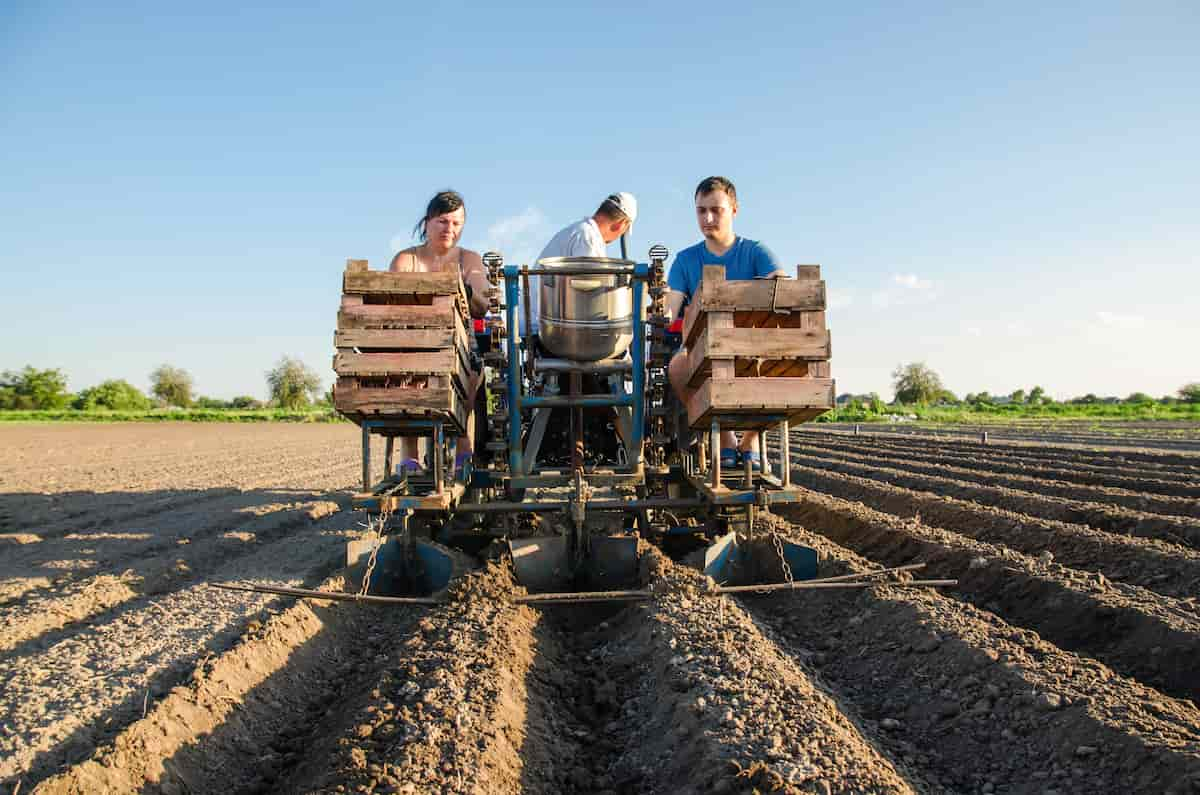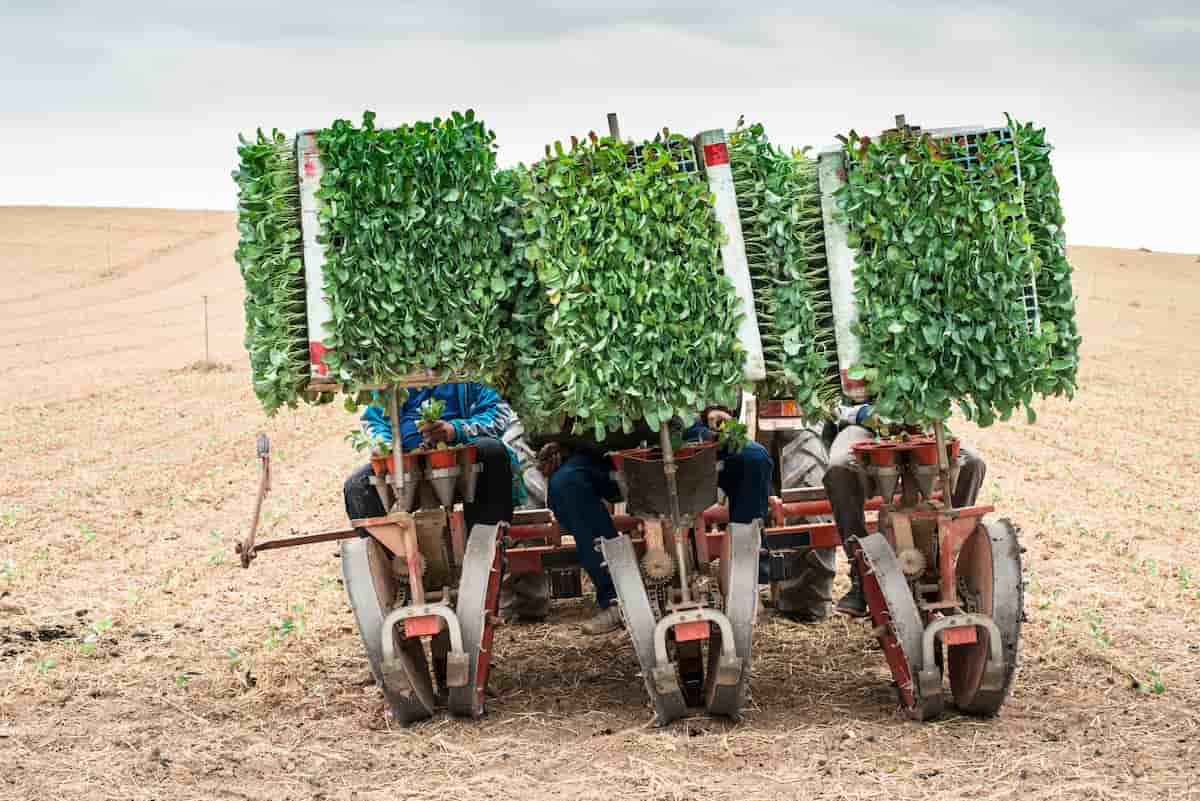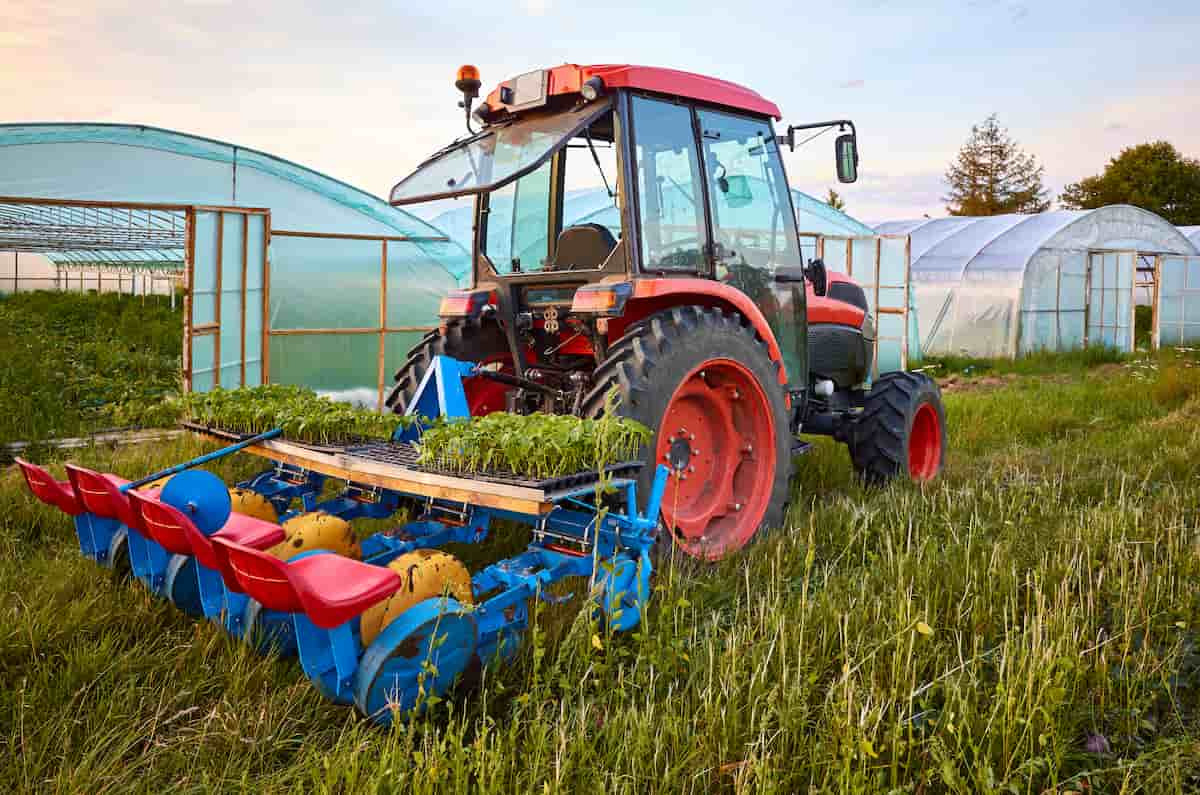Vegetable transplanters are machines intended to automate the labor-intensive process of transplanting seedlings into the soil. The value of vegetable transplanters in modern agriculture comes from their ability to save time and money and improve productivity, allowing farmers to meet the growing food needs of a large population. Small and cost-effective vegetable transplanters are especially needed in India, where vegetables are grown in small plots.

The current study has concentrated on creating and testing various manual, semi-automatic, and automatic vegetable transplanters to determine which models are most effective in Indian conditions. This article will provide an overview of vegetable transplanters, improvements in transplanting technology used in India, and a cost-benefit analysis of using vegetable transplanters versus traditional manual labor.
Vegetable Transplanters in India
What is Vegetable Transplanters?
Vegetable transplanters are machines that use a mechanism to pick up seedlings from trays and transplant them into the soil with minimal damage to the plants. They eliminate the need for manual labor, reduce planting time, and ensure timely transplanting, which is crucial for the success of vegetable crops. Moreover, vegetable transplanters also ensure uniformity in plant spacing and depth, which is essential for the proper growth and development of plants.
Need for Vegetable Transplanters
Manually sowing and transplanting vegetable seedlings is a laborious and time-consuming task that requires significant physical effort. This usual procedure frequently results in delayed transplantation, which can result in seedling mortality and yield loss. Vegetable transplanters that automate the seeding and transplanting procedure have been developed to tackle this issue.
Types of Vegetable Transplanters
Manual transplanting of vegetable seedlings in India involves using hand tools, such as spades, shovels, and khurpi. While low-cost hand-held vegetable transplanters have been developed to ease the struggle of manual transplanting, they have a limited field capacity of about 0.02 ha/h and are inefficient. Mechanical transplanting is a more efficient and less labor-intensive method of transplanting seedlings.
Mechanical transplanters perform three main functions:
- Opening the soil in a narrow furrow
- Placing the seedlings vertically upright
- Closing and compacting the soil around them without damaging the plants
Vegetable transplanters can be classified as automatic (AVT) or semi-automatic (SVT) type transplanters, depending on their level of automation.
Semi-automatic vegetable transplanters are available as an attachment to self-propelled prime movers or power tillers. They use pocket-type, cup-, or bucket-type metering mechanisms and are prone to miss-feeding seedlings at higher transplanting rates. Riding-type transplanters are generally tractor-operated and available in 2-3 rows.
Automatic vegetable transplanters, on the other hand, substantially reduce the labor requirement for feeding seedlings. They can be either walk-behind or riding-type machines and have a higher capacity than semi-automatic transplanters. In India, however, AVT is yet to be available due to a lack of appropriate technology affordable to farmers.
In case you missed it: 1 Acre Vegetable Farming Success Story: Check How This Horticulture Farmer Turned His Fortune by Growing Vegetables

Different Metering Techniques in Vegetable Transplanters
Different metering techniques are employed in vegetable transplanters, including pocket-type or finger-type, cup- or bucket-type, rotary cup-type, conveyor-type, linked-chain-type, and seedling pick-up type mechanisms.
- Pocket-type or finger-type is usually used for bare-root seedlings such as eggplant, tomato, cabbage, cauliflower, celery, sweet potato, broccoli, and lettuce.
- Cup- or bucket-type is generally used for transplanting plug or potted seedlings such as eggplant, tomato, chili, etc.
- Rotary cup-type is used for transplanting plug or potted seedlings such as tomato, cabbage, cauliflower, celery, lettuce, and chili.
- Conveyor-type is used for bare-rooted or block transplants. Seedling pick-up type mechanisms are generally used for planting plug seedlings of vegetables like lettuce.
- These techniques have varying efficiencies based on the type of seedlings being transplanted.
Benefits of Using Vegetable Transplanters
- Vegetable transplanters save farmers time and work by planting seedlings swiftly and accurately. Farmers can grow more land faster and more profitably with a vegetable transplanter.
- Vegetable transplanters help growers to plant seedlings at a consistent depth, improving crop establishment. This boosts output, quality, and plant survival.
- Transplant shock is reduced when plants are transplanted. It can stunt growth and output. Planting vegetables without root injury reduces transplant shock.
- Vegetable transplanters save growers money over time. While the equipment is expensive, it lowers labor costs and boosts crop yields, increasing profits.
- Vegetable transplanters reduce soil erosion and preserve water. They limit herbicide and pesticide use on farms.
Prices of Vegetable Transplanters in India
- Krishak Vegetable Transplanter: This hand-operated transplanter is suitable for small to medium-sized farms. It can plant up to six rows at a time and has adjustable row spacing.
- Kirloskar Green Vegetable Transplanter: This self-propelled transplanter can plant up to six rows simultaneously. It has adjustable row spacing and can transplant seedlings of different sizes.
- Mahindra Green Crop Care Vegetable Transplanter: This three-point hitch-mounted transplanter can plant up to four rows at a time. It has adjustable row spacing and can transplant seedlings of different sizes.
- Honda Power Products Vegetable Transplanter: This walk-behind transplanter suits small farms. It can plant up to six rows at a time and has adjustable row spacing.
- Kubota Vegetable Transplanter: This self-propelled transplanter can plant up to eight rows simultaneously. It has adjustable row spacing and can transplant seedlings of different sizes.
Cost Analysis of Using Vegetable Transplanters Over Manual Transplanting
The cost analysis of vegetable transplanters involves considering the material, overhead, and labor costs. Mechanized vegetable transplanting reduces the cost by reducing the number of man-hours needed. However, fixed costs such as the initial cost of the transplanter, depreciation, and operating costs determine the break-even point of minimum annual use to justify ownership of the transplanter.
The average cost of manual transplanting is about Rs 12,000/ha, with an average labor cost of Rs 400 per day. Tractor-operated transplanters in India have an average initial cost of Rs 70,000 to 1,00,000. Custom hiring services are calculated to be 50-70 hours of annual use. An automated vegetable transplanter capable of metering at the same rates as manual feed transplanters is estimated to cost Rs 1.5-3 lakh. Its use is justified with a minimum annual use of 35 hours.
In case you missed it: Frequently Asked Questions About Vegetable Farming: Vegetable Gardening, Planting, and Care

Conclusion
Vegetable transplanters are more popular nowadays, widely used in India, and come in various types with different benefits. They save time and labor, increase efficiency, and improve crop yields. Costs vary depending on the type of machine, but they are generally affordable for farmers.
- Feed Your Flock for Less: Top 10 Tips to Save on Chicken Feed
- Ultimate Guide to Ossabaw Island Hog: Breeding, Raising, Diet, and Care
- Hatching Answers: The Top 10 Reasons Your Chickens Aren’t Laying Eggs
- Eggs and Economics: Breaking Down the Cost of Raising Backyard Chickens
- Defend Your Greens: Proven Methods to Keep Iguanas Out of Your Garden
- Ultimate Guide to Cinnamon Queen Chicken: A Comprehensive Guide for Beginners
- Ultimate Guide to California Tan Chicken: Breeding, Raising, Diet, Egg-Production and Care
- Ultimate Guide to Marsh Daisy Chicken: Breeding, Raising, Diet, and Care
- 10 Types of Chicken Farming Businesses You Can Start for Profits